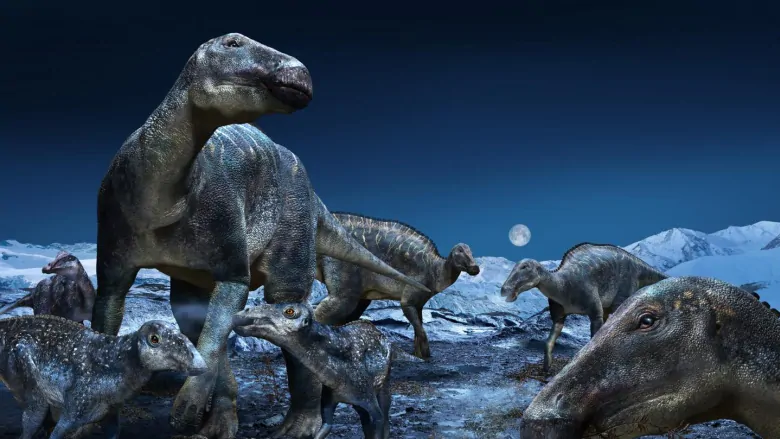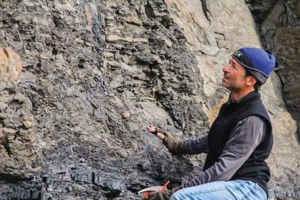The ‘caribou of the Cretaceous’: study says Edmontosaurus once called the Arctic home

One of the most prolific dinosaurs known lived some 70 million years ago between Alberta and Colorado. It also called Alaska’s Far North home, and may have even travelled further afield to Asia, according to new research.
The Edmontosaurus, dubbed the cow of the Cretaceous, was a duck-billed hadrosaur that grew to about 15 metres in length and was thought to have roamed the prairies in herds.
But a new study published Wednesday in the journal PLOS ONE says the creature may have lived further north.
“The fact that we’re up in Alaska and the high latitudes, it seemed way more appropriate to start referring to them as the caribou of the Cretaceous,” says Dr. Anthony Fiorillo, chief curator of the Perot Museum of Nature and Science in Dallas and one of the co-authors of the study.
Fiorillo was part of a group of international researchers from the United States and Japan that studied a large database of hadrosaur bones including records from the Canadian Museum of Nature in Ottawa, the Royal Ontario Museum in Toronto and the Royal Tyrrell Museum of Palaeontology in Drumheller, Alta.

Their work suggests what was thought to be a new species of hadrosaur in northern Alaska, known as the Ugrunaaluk kuukpikensis, turns out to be juvenile Edmontosaurus. The fossils were mainly found in the Prince Creek Formation of the Liscomb Bone Bed along the Colville River in Alaska.
“It is really difficult to figure out what an adult form looks like looking at juvenile bones. Just think about a picture of when you were five versus now,” Fiorillo said.
He said the finding means the Edmontosaurus had a large geographic range and was able to adapt to a wide variety of environmental conditions, describing them as “ecological generalists.”
“In any environment there are specialists and generalists and usually when something happens to that environment, specialists tend to die out. The generalists can adapt to more varied conditions,” he said.
‘Close cousins’
The study also revealed the Edmontosaurus is a close relative to the Kamuysaurus, a dinosaur found in Hokkaido, Japan.
“These are close cousins,” Fiorillo said.
The two belong to a subgroup of hadrosaurs known as Edmontosaurini.
The research suggests the dinosaurs traversed Asia and North America using the Bering land bridge, a stretch of land that connected the two continents millions of years ago.
Those that stayed in North America evolved to the Edmontosaurus, and those that stayed in Asia are believed to have evolved to the Kamuysaurus.
“The North is the keystone to understand what’s happening in two continents — Asia and North America,” Fiorillo said.
“It’s the gateway to really getting into something the public really has a fascination with and we have so many more stories still to tell.”
Related stories from around the North:
Canada: Fossils found in northwestern Canada help scientists retrace steps of ancient hyena, CBC News
Greenland: Bizarre skull belongs to first known beluga-narwhal hybrid, CBC News
Norway: Arctic underwater forests set to expand with rapid warming, Eye on the Arctic
Russia: New map shows what Bering land bridge looked like 18,000 years ago, CBC News
United States: Paleontologists discover Arctic’s first-ever lambeosaur fossil in Alaska, CBC News



